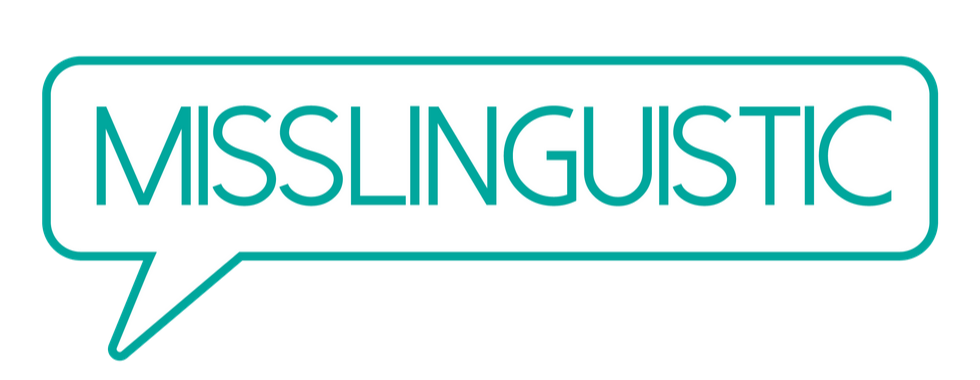The United Nations has declared 2019 the Year of Indigenous Languages. I know a lot of you are taking that as your cue to try your hand at learning a minority language, from Occitan to Teochew to Hawaiian!
How fun! But of course one of the biggest challenges of learning a minority language is that it can be harder to find online resources.
So, in this blog post I’ll explain how linguists approach this problem using a Swadesh List – and how you can apply this methodology to learning any language, minority or otherwise!
How I Learned to Use Swadesh Lists to Quickly Master a Language
After university, I worked for a few years in a psycholinguistics research lab studying Nicaraguan Sign Language (a post for another day…)
Part of my job at that lab was actually to help document other sign languages, so that we could later compare them to Nicaraguan Sign Language. And this was before everyone had a website. Before the Deaf community was vlogging all over social media, before you could learn nearly anything online.
So this documentation had to be done in the field. Essentially, I would show up in a new country, not knowing a word of the local sign language. My task would be to learn enough of their language that I could build relationships with members of the Deaf community, and invite them to participate in our research.
Once we had recruited these “community linguists”, they spent hours in front of my video camera teaching me the most important vocabulary from their language.
It was an invaluable experience. It was how I learned to build lists of the words and phrases that I would need to know to get my work done, often on a deadline.
So, how do linguists learn new languages in the field?
Often, they use lists that they call “Swadesh lists” to quickly gather the most important vocabulary and grammatical information. These lists are usually used for a slightly more academic purposes than those of the everyday language learner, but the concept is still very useful to those of us learning languages more casually.
Here I’ll show you how we can design our own “Swadesh” lists to efficiently study rare languages, minority languages, or really ANY language more efficiently: without having to buy a textbook! And then I’ll even give you my own Swadesh list as a base to work with!
History of the Swadesh List
First, let’s get some background.
The Swadesh list, created by linguist Morris Swadesh in the 1950’s, is a “classic compilation of basic concepts for the purposes of historical-comparative linguistics”, according to Wikipedia.
Dr. Swadesh developed several versions of this list. His purpose was to identify certain universal (-ish) concepts that could be used to learn and describe a language, even when there wasn’t much readily-available pedagogy. This was how he studied the Salish language, a minority language spoken in the American state of Montana.
This method was developed for very academic purposes. But as I’ve already mentioned, that doesn’t mean it can’t be adapted for use by more casual language learners.
Why Use a Swadesh List?
For Efficient Learning: The Pareto Principle
Before we dive in, I want to convince you that this method is worth incorporating into your study plan. After all, it involves not a small amount of up-front labor.
You know I’m all about efficiency. One of my favorite principles of learning is the Pareto Principle: the idea that 80 percent of effects come from 20% of causes.
This is a principle that is often repeated in business: focus on 20% of your clients, because they’ll get you 80% of your profits.
The same is true of language learning. Out of any dictionary or (most) textbooks, you will probably end up using 20% of what you read. So if you’re just dipping your toes in, or trying to get some initial momentum, why bother with superfluous information?
The trick is identifying that 20% of useful information.
Swadesh lists keep you efficient.
In addition to becoming more efficient, many language learners face a more immediate challenge: lack of available learning resources.
How many of you Hawaiian learners have managed to find a teacher on italki? How many of you have found a Navajo Pimsleur course?
When there aren’t many available online resources to learn a language, a Swadesh list should form the core of your study plan.
I’ve used this method myself to study several languages, including Venetian and Slovak – both languages with relatively healthy populations of speakers, but without many online resources.
But you can also use a Swadesh list even if you’re studying a commonly-studied language. Especially if you don’t want to shell out for a textbook ?
Getting Started
Most Swadesh lists work off of a base of words that have been proven to be effective for that linguist and that language family’s purposes.
I’m going to give you my base list of words and phrases that I have found to be most generalizable and most useful. I’ve used this list for nearly all the languages I’ve studied, from French to Venetian to Mongolian.
Then I’ll show you how to adapt that list to be maximally efficient for your language and your purpose.
Steps For Using My Swadesh List
First, download my Swadesh list (free!)
Download Your Swadesh List
- After you download my Swadesh List, take some time to edit the red text, which is text you’ll want to adapt for your own purposes.
- Then, you’ll want to enlist the help of a native speaker of that language (either a tutor, a language exchange buddy, someone you hire on Upwork or Fiverr, or a very generous friend).
- Either send this native speaker the Swadesh List to translate, or better yet: work through the list together, asking for the translations of each term or phrase into the target language.
- If necessary, ask for recordings of each term or phrase (but this can be quite tedious for the native speaker, so if you do this, make sure you compensate them properly!) Another great way to do this is to record your Skype call, or to just record your session on your phone.
- Then, turn your updated Swadesh list into flashcards (I like Anki) and get to work studying!
How to Further Adapt Your Swadesh List
This list covers the terms and phrases that have been the most useful for me for the last ten languages I have studied (including Cantonese, Mongolian, Venetian, Slovak, Czech, Swedish, Vietnamese, German, Ukrainian, Malay).
These languages cover a fair breadth of language families. However it doesn’t do much justice to languages of Africa or the indigenous languages of the Americas or Australia. You will very likely find that you need to ask your tutor for more than what is on this sheet. If so, here is what you should keep an eye out for:
-
Consider Your Language’s Typology/Structure:
Romance languages will have different needs from Slavic or Nordic languages. Turkic languages will have very different grammar than Austronesian languages.
I recommend that you look up which language family your language belongs to, and see what features stand out. Ethnologue or Wikipedia can be great for this.
Does your language incorporate case markers on nouns? If so, you might want to add in a few sentences that use nouns in different ways. Does it distinguish between male and female speakers? If so, add in a few sentences that contrast the gender of the speaker.
If you’re not familiar with these linguistic terms, enlist the help of a tutor. Show him or her your Swadesh list and ask for advice on how to update it.
-
Consider Your Own Pragmatic Needs
What are the first questions people tend to ask you? What are your answers? Incorporate these into your Swadesh list.
-
Consider your purposes for learning this language
My purpose is usually to get a sense of the structure of the language. I also want to be linguistically independent as I travel.
I don’t waste time learning terms for things like recipes (I’m probably not going to cook anything complicated on the road) or even directions (because let’s be honest, I’m going to use Google, Baidu, or KakaoMaps).
But I do focus a lot on terms for self-introductions and ordering in restaurants. That is just me: your needs may be different.
How I Used this Swadesh List to Study A Minority Language
Last year, I took a trip to a town that speaks an ancient dialect of Venetian (another topic for another blog post!) Naturally, I wanted to have some basics before I went.
Starting with my base Swadesh list, my first step was to sign up for italki lessons in Venetian. This was actually no easy feat – I emailed the italki team for extra help. It took a couple weeks, but they finally found me some great tutors!
I ended up with one italki tutor and another tutor I found on Upwork. They both ended up being EXCELLENT, even though they had never taught Venetian before!
One tutor helped me populate my Swadesh list, over the course of 3 lessons. The other ended up being more of a conversation partner, so that I could drill what I learned.
Towards the end of the month, with my tutors’ help, I wrote, memorized, and recorded a monologue introducing myself in Venetian (using my Monologue Method), so that I could work on mastering the prosody (musicality) of Venetian.
And that’s it! That was one month’s study. At the end of the month, I put my Venetian to the test. I’ll write more about that someday!
Ok, are you ready to try it out yourself? Click here to download my Swadish list for any language, for free!
Have you ever used a Swadesh list to learn a foreign language? Let me know how it went in the comments!








Thank you for the helpful information. I find this incredibly fascinating. My name is Kristy and I am Cree Indigenous from Kanatan Askiy (clean land) or what is now called Canada. I am learning my language from my grandmother. I love learning about the tips you have for people speaking minority languages.
I am so glad it was helpful! Keep up the good work!
I’m also very interested in languages and I speak English, French, Spanish, Catalan and some Korean (I was born in Korea but left when I was 9 month old), Vietnamese, Mandarin Chinese, Cantonese, Italian and Dutch (I live in Belgium where ther 3 official languages here). I stumbled on your website and this brought me here!
I graduated as a translator but I am more interested in philology and phonetics.
I’ve studied old Korean texts (such as Nogeoldae 노걸대, Kyurim Yusa 규림유사, etc…) and I’m compiling (work in progress) a 5000 Chinese character list (with Old Korean, Modern Korean, Old Chinese, Middle Chinese, Go and On Japanese and Vietnamese pronunications) as well as a list of the numbers – 1 to 10 (one of my very first language projects)- in more than 8000 languages and dialects.